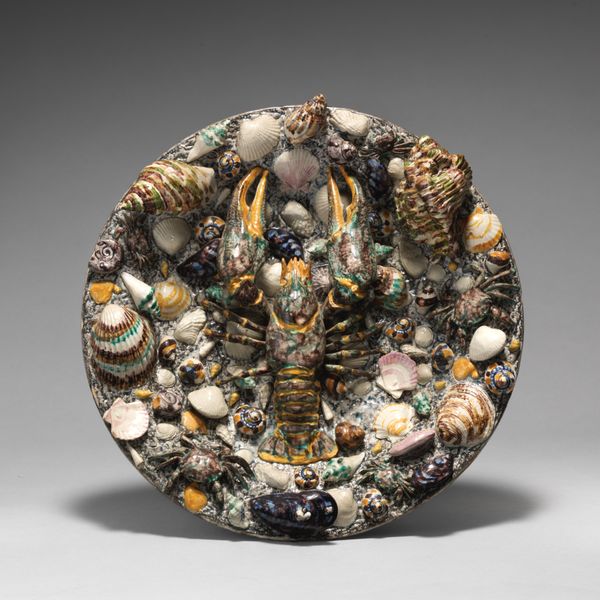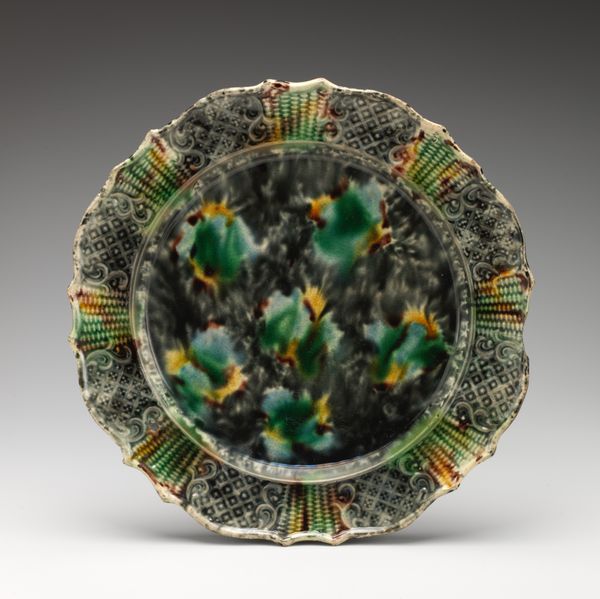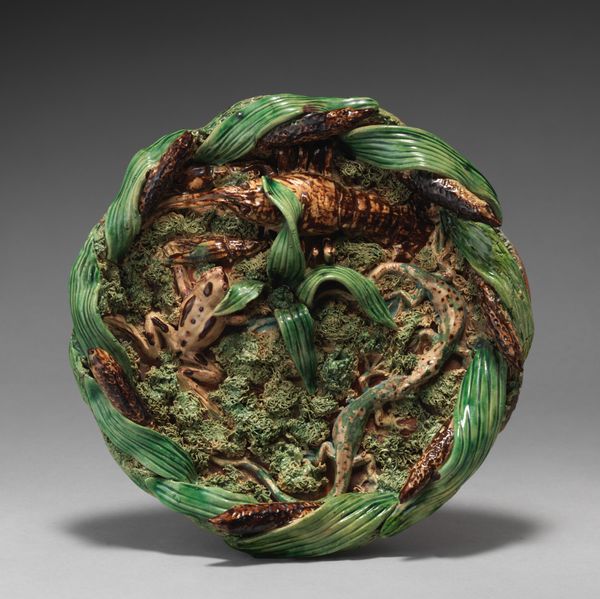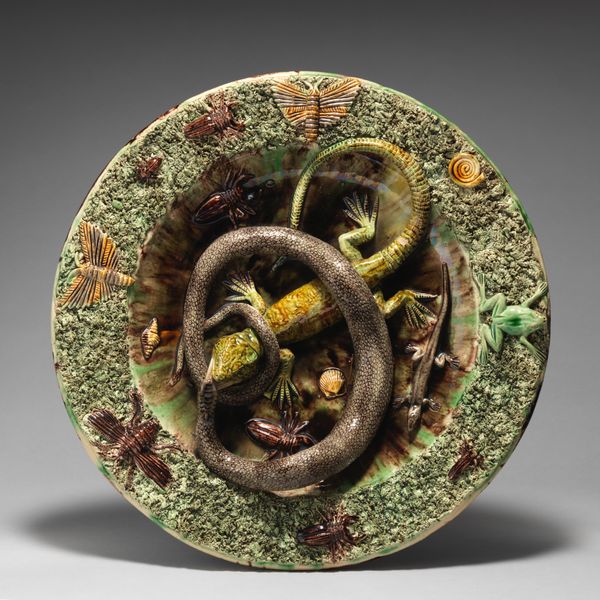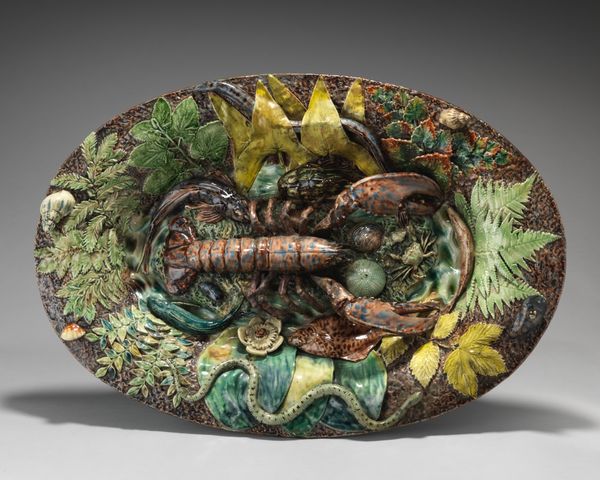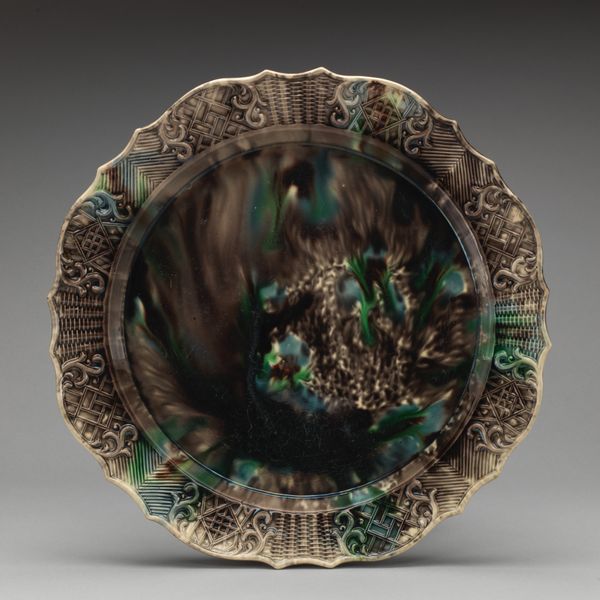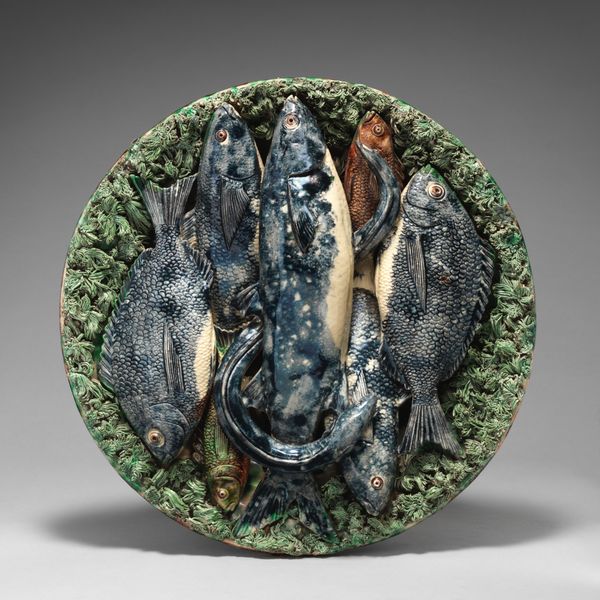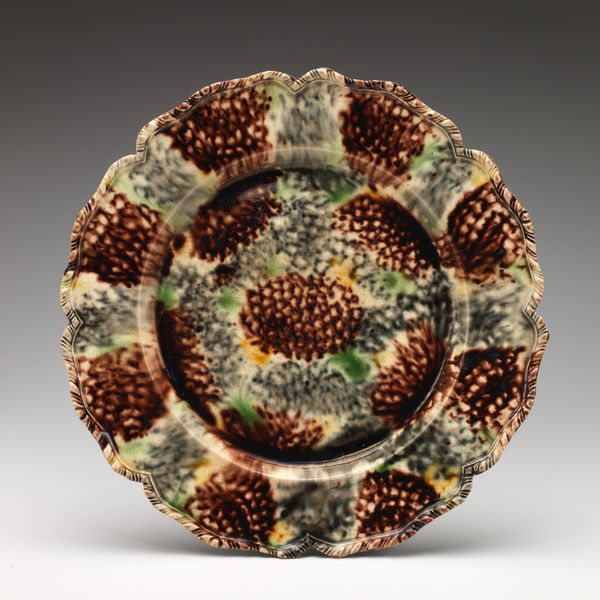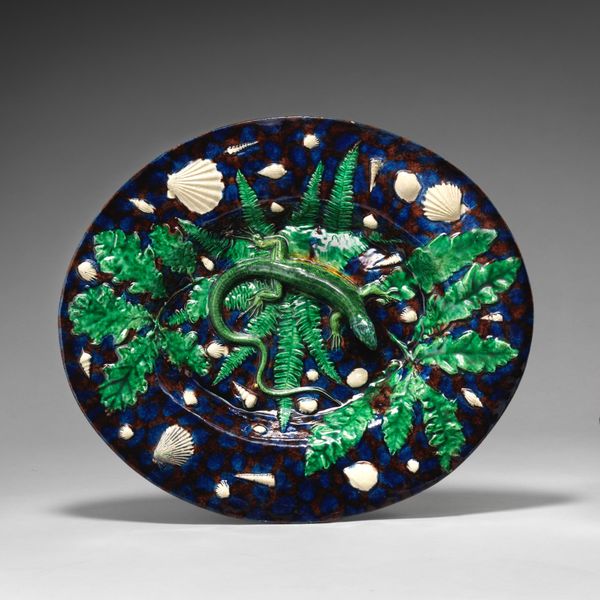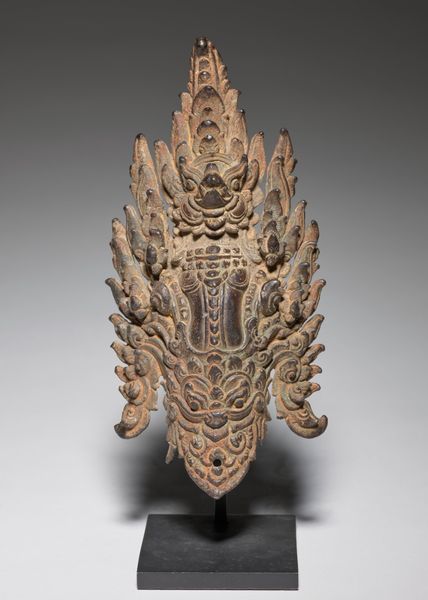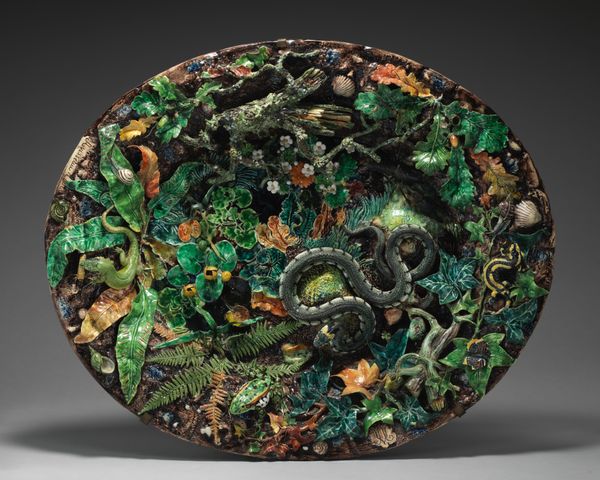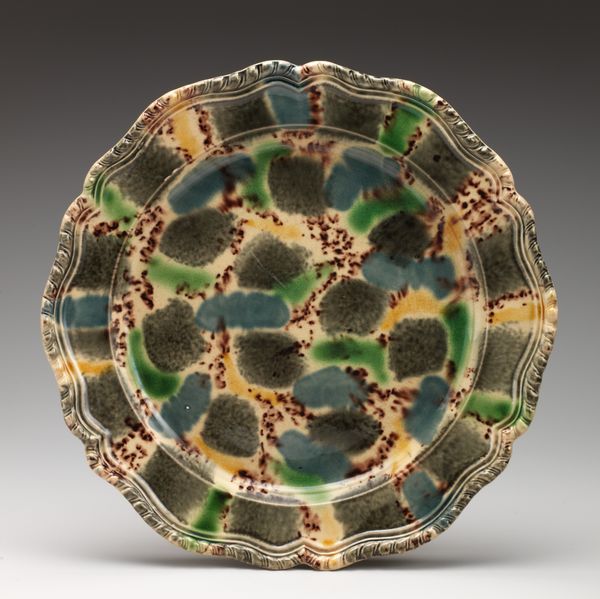
ceramic, sculpture
#
ceramic
#
sculpture
#
decorative-art
Dimensions: confirmed: 5 1/4 × 17 3/4 in. (13.3 × 45.1 cm)
Copyright: Public Domain
Curator: What a striking piece. Here we have Rafael Bordalo Pinheiro's ceramic "Round plate with lobster," crafted in 1889. It's currently housed at the Metropolitan Museum of Art. Editor: My immediate reaction is the sheer texture! It’s so tactile, you want to reach out and feel the roughness of that lobster shell against the smooth glaze of the plate. The way those glazes interact – dark blues swirling with lighter shades – suggests movement, a sense of being underwater. Curator: Exactly, Bordalo Pinheiro was a master of representing Portuguese national identity through his work, particularly through food. This plate speaks to the late 19th-century context of burgeoning national pride, situating culinary heritage at the center of cultural expression. Lobsters, as luxury items, were markers of wealth and class distinctions, adding a layer of social commentary. Editor: That resonates. And if we consider the materials and the means of production, ceramic art blurs the boundaries between fine art and craft. This piece, originally functional, challenges those hierarchies. It forces us to think about the labour involved, the firing process, and how the natural materials were manipulated to mimic life. Curator: Yes, its functionality underscores the complexities of representation. Consider how the plate might have originally been used, then consider the lobster presented as a decadent object—almost monstrous. Its otherness disrupts typical notions of domestic comfort, introducing questions about consumption and power. Editor: Bordalo Pinheiro definitely plays with that tension. The lobster dominates, imposing itself on the watery ceramic ground, it makes me consider consumption on so many levels – literally, aesthetically, socially. How radical this subversion of everyday materials to deliver that statement! Curator: Ultimately, this ceramic artwork goes far beyond being merely decorative. It invites us to confront the multifaceted layers of Portuguese national identity, wealth, and consumption, asking us to challenge established narratives of class and taste. Editor: And looking at it, the labour poured into creating that intricate ceramic lobster can not be dismissed, the artistry lies in material transformation that is what makes it enduringly impactful.
Comments
No comments
Be the first to comment and join the conversation on the ultimate creative platform.
